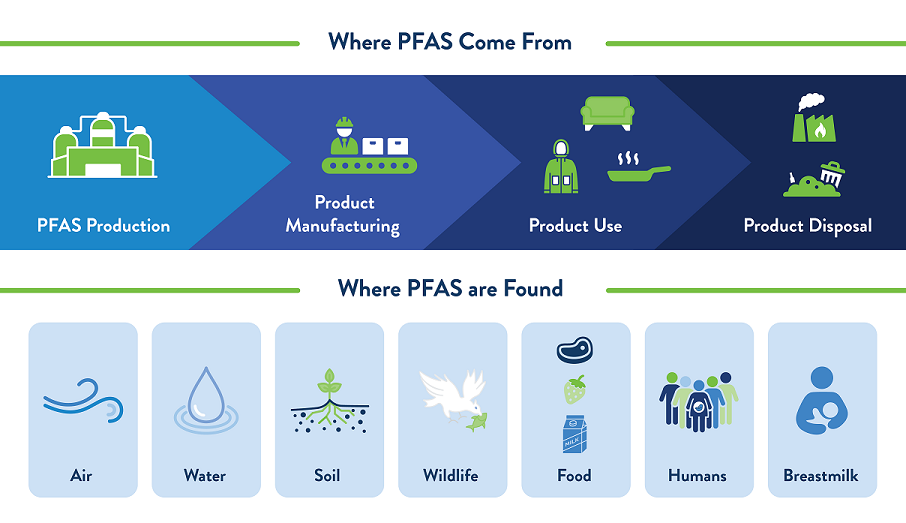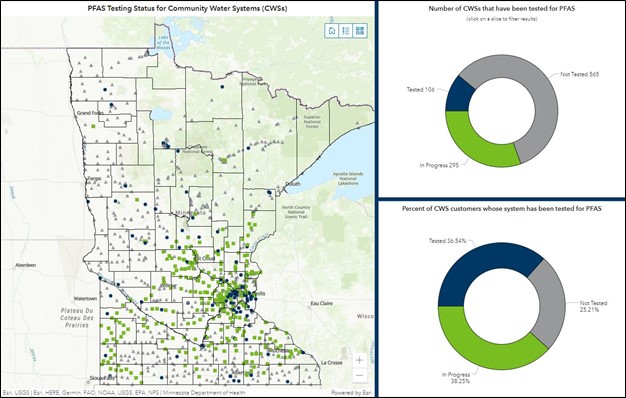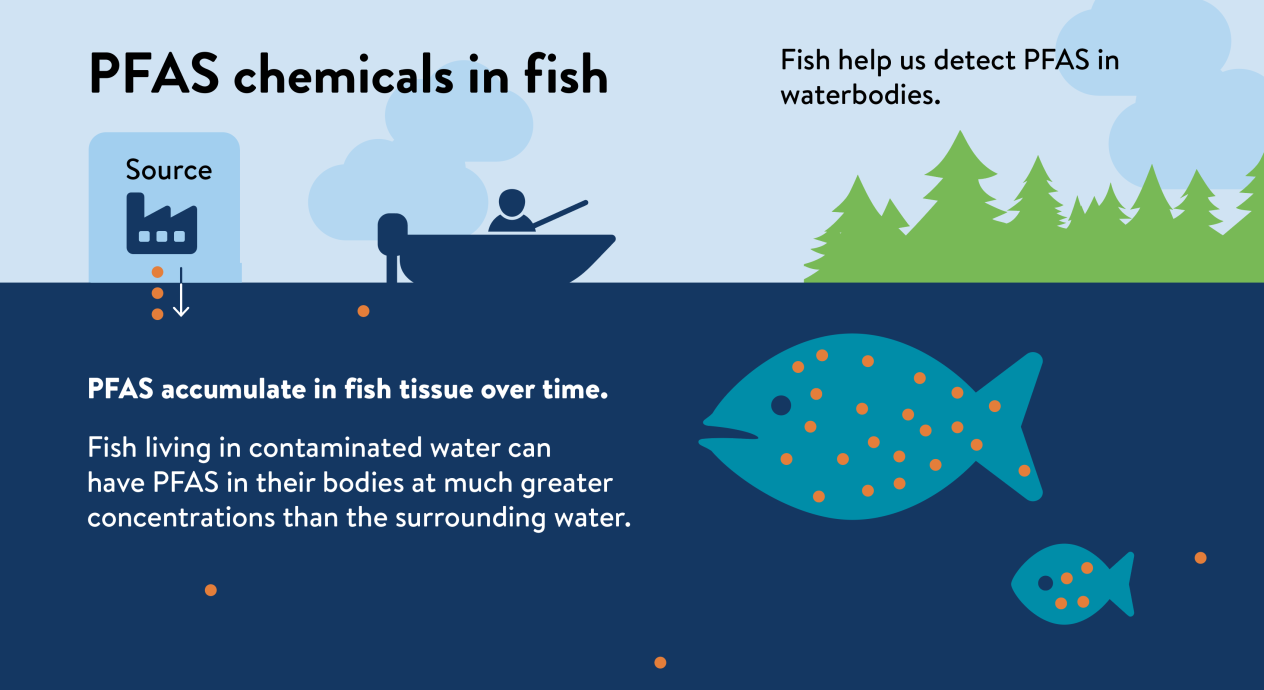2024 Public Health Laboratory Annual Report
PFAS Monitoring Expanded to Fish, Non-Potable Water
The Minnesota Environmental Laboratory is a national leader in testing for a class of human-made chemicals called per- and polyfluoroalkyl substances (PFAS). Since 2002, the lab has analyzed soil and water for traces of PFAS, which are chemicals used in manufacturing, consumer products and some firefighting foams. Many of these compounds have been linked to significant health risks and cancer.

PFAS are so-called “forever chemicals,” as they take millions of years to degrade. They can also build up in people’s bodies over time. Even very small amounts of the chemical in the environment can pose long-term dangers. The Environmental Protection Agency (EPA) finalized regulations last year for monitoring and controlling the chemicals in drinking water and the environment. (Read more in PFAS: First New Drinking Water Contaminant Since 1996, from last year’s Annual Report.)
In 2023, the Minnesota Environmental Laboratory established their own testing in line with EPA regulations laying out how to monitor drinking water for PFAS. In March 2024, the lab expanded into analyzing fish and non-potable water. Prior to bringing the testing of fish and non-potable water in-house, samples had to be sent to a lab in British Columbia.
New laboratory unit focuses on PFAS
 In response to the new federal regulations and funding from the Clean Water Land and Legacy Amendment, the Environmental Lab created a new Emerging Contaminants Unit. This unit is tasked with expanding the capacity for PFAS testing to accommodate the expected increase of samples from drinking water, non-potable water, and fish. The unit will also be expanding its capabilities to identify more PFAS compounds by adding new types of instruments and developing new methods.
In response to the new federal regulations and funding from the Clean Water Land and Legacy Amendment, the Environmental Lab created a new Emerging Contaminants Unit. This unit is tasked with expanding the capacity for PFAS testing to accommodate the expected increase of samples from drinking water, non-potable water, and fish. The unit will also be expanding its capabilities to identify more PFAS compounds by adding new types of instruments and developing new methods.
At this writing, the Emerging Contaminants Unit includes seven laboratory scientists devoted to testing water and three research scientists devoted to testing fish for PFAS, as well as other emerging contaminants. They have five dedicated instruments and automated extraction equipment to make the testing process more efficient. Still, PFAS testing is a time-consuming process, and there is a continuous queue of samples to analyze.
Results
 EPA regulations establish maximum contaminant levels for PFAS in drinking water. These concentrations are measured in nanograms per liter, or parts per trillion. If tests show that drinking water systems or other sources exceed allowable concentrations, the sources must install technology that filters out PFAS. Testing results are available in a set of interactive PFAS maps on the Minnesota Department of Health website.
EPA regulations establish maximum contaminant levels for PFAS in drinking water. These concentrations are measured in nanograms per liter, or parts per trillion. If tests show that drinking water systems or other sources exceed allowable concentrations, the sources must install technology that filters out PFAS. Testing results are available in a set of interactive PFAS maps on the Minnesota Department of Health website.
Helping keep fish safe to eat
On July 11, 2024, the EPA updated recommendations for states, Tribes and territories to monitor locally caught freshwater fish for PFAS. The Minnesota Pollution Control Agency and Minnesota Department of Natural Resources do routine testing of lakes, rivers, and streams, while also focusing on bodies of water with known pollution issues. (See the Minnesota Pollution Control Agency’s PFAS in Fish page for more information.) These agencies send hundreds of samples for the Emerging Contaminants Unit of the Environmental Lab to test for PFAS.
Members of the public can help keep themselves safe by reading the Department of Health’s Fish Consumption Guidance. The site contains Safe-Eating Guidelines and updates on which bodies of water may contain contaminated fish.
Return to the main 2024 Annual Report page.
